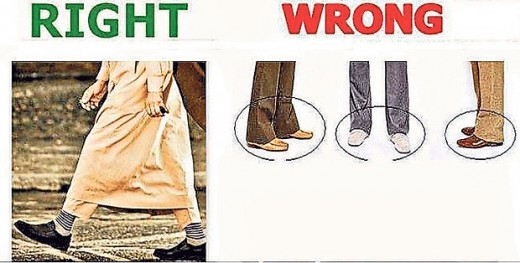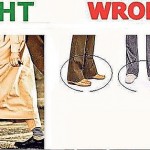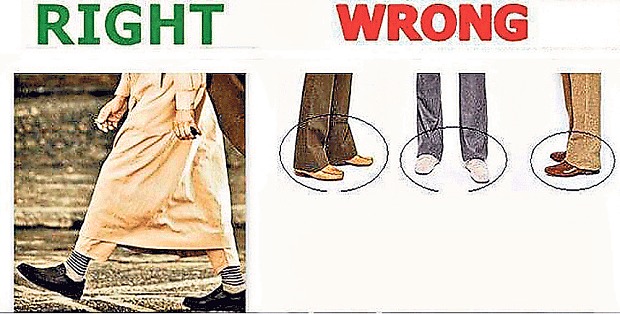Ankle-size Hems For neatly-Dressed Muslim men
Some web pages name garments falling below the ankles “one of the most greatest sins”

Some Muslim males put on their outer garment short. any individual informed me that the idea used to be to show the ankles. I could rarely believe that, and puzzled if it might be to steer clear of soiling the hem of the clothes.
I had no longer suspected what a hotbed of controversy the observe entails. I determined to have a look at what the internet offered, and shortly found photos of learn how to regulate hem length (pictured).
a popular web page came up with a page of “blunders in Prayers that must be avoided”. They numbered 30. the primary used to be “sporting pants, or clothes that hold beneath the ankles.” It commenced with the stunning remark: “This is one of the best sins.”
It justified the opinion with two hadith (traditions of Mohammed’s sayings and movements). the primary was once given as “There are three people whom Allah shall not talk to on the Day of Resurrection, nor shall he take a look at them, nor shall he purify them, and they shall have a painful torment: One whose garment hangs down beneath his ankles, almanaan, and (a merchant) who sells of his merchandise by the use of false oath.” (Almanaan or in all probability almannan is something to do with reward-giving and needn’t be pursued right here.)
the other hadith, as explained there’s: “The part of the garment which hangs under the ankles is (punishable by means of) fire (on the Day of Resurrection).”
On different web web sites there are many pictures comparable to posters that say things like: “Allah is not going to look on a person on the Day of Judgment who drags his izaar out of pleasure and conceitedness.” (A hadith cited here is from the collection of al-Bukhari, Vol 7, ebook seventy two, No 679.)
The sponsors of “errors in Prayers that must be refrained from” are taken to job by means of the web page of As-Sunnah groundwork of the us, which calls them Salafi propagators of errors in the guise of corrections, who read hadith as in the event that they “have been a newspaper, regardless of the prescriptions of hadith methodology”. These folks “have misunderstood the caution of the Prophet against vestimentary delight to consist exclusively in some extent about ankle-size”.
there is an account of Abu Bakr (Mohammed’s sweetheart’s father and the primary Caliph after his death) hearing this caution, “Allah will not appear, on the Day of Resurrection, at the person who drags his garment (at the back of him) out of conceit.” Abu Bakr mentioned: “O Allah’s Apostle! One facet of my izar hangs low if I do not maintain it.” Mohammed said: “you are not a type of who do this out of conceit.”
To an outsider it isn’t straightforward to peer who is right in interpreting the regulation in Islam. There are 4 mainstream colleges of legislation in Sunni Islam. One jurist in the Shafi’i school was Yahya Ibn Sharaf al-Nawawi, who taught in Damascus in the course of the 13th century. He mentioned that garb under the ankles if worn out of arrogance used to be prohibited as strictly forbidden (tahrim). in any other case it was forbidden with a prohibitiveness of the lesser type.
it’s exhausting to grasp why trailing clothes need be a sign of arrogance. in fact they would possibly type a wonderful train, however some other hadith means that superb clothes in themselves aren’t hateful to God. every other cause put forward is that trailing garments grow to be soiled, and so the observe is wasteful. but in all probability in previous centuries trailing garments seemed self-certainly conceited.
Islam spherical the world is ready to slot in with daily lifestyles. some of its stipulations could be tough, akin to fasting in Ramadan, or as a minimum tense, corresponding to prayer five occasions a day, abstaining from alcohol and alms-giving. For males to reveal the ankles seems a more arbitrary criterion of righteousness.
Telegraph Columnists: day-to-day opinion, editorials and columns from our superstar writers
(64)









